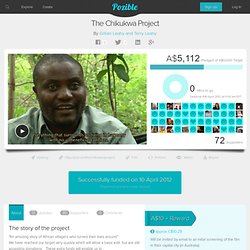

Industrial Hemp in the United States: Status and Market Potential. Our Little Acre: Potatoes in a Barrel. We grew potatoes one year.

We'd never grown them before, but at my grandma’s urging, accompanied by her recollection of her family growing them in a "truck patch," we decided to plant them. Now this was back when we knew next to nothing about gardening, so we did it just like we were told. (That way we could blame Grandma if things didn’t work out.) We purchased a bag of seed potatoes, which don’t look much like seeds at all. They look like the potatoes in my refrigerator when I forget about them. We cut the potatoes into pieces with two or three eyes on each piece and let them dry out for a couple of days. This year, we’re growing them in a new way (for us). Potatoes planted in the barrels on April 3rd broke through the soil on April 17th. As the potato plants grow to about eight inches high, we’ll continue to add soil to about half the height of the stems, and the plants will keep on growing.
ShareThis. Sherana Sheep and Cattle - Our Damara flock. Damara sheep are a pure natural breed, which originated from the Hamites of Eastern Asia and then moved through Egypt into Africa.

It is one of the oldest sheep breeds in the world. They were discovered by early German settlers in Namibia and Angola. For many years they were confined to an isolated region of Namibia and Angola (a region once known as "Gross Damaraland"), free of the influence of other breeds. Damara sheep have short glossy hair (resistant to grass seeds) long legs, fat tail, high fertility, hardiness and good mothering and herding instincts.
These traits developed under natural selection on the African continent. A Sherana Damara Ram Our original genetics came from "Hall Damara" in Western Australia, who imported them from South Africa, mainly from the flocks of Clynton Collett, the President of the South African Damara Breeders Society. Our sheep flock comprises: Over 100 pure bred ewes and rams from six ewe lines and about 20 ram lines. The Chikukwa Project by Gillian Leahy and Terry Leahy on Pozible. The Chikukwa Project By Gillian Leahy and Terry Leahy Successfully funded on 10 April 2012Payment portal is now closed Any questions about how Pozible works, check out the supporters FAQs.

You may also like the following projects. A$1,265 Pledged 33 Days left A$3,070 Pledged 53 Days left A$1,729 Pledged 11 Days left A$20,430 Pledged 14 Hours left A$4,505 Pledged 27 Hours left. Top 6 most cost-effective vegetables to grow. There are many benefits to growing your own vegetables, but saving money is not necessarily one of them.

Some vegetables are simply cheaper to buy at the grocery store, and no amount of gardening savvy will result in a cost-saving benefit. Over the years we have experimented with many vegetable crops, and while saving money is not the prime reason we grow vegetables, it is a consideration in our choice of what to plant. Although we are fortunate to have plenty of ground space for gardening, the work required to keep the beds fertile and weed free discourages us from planting some crops which are ‘dirt cheap’ when bought in season. If you are growing vegetables in the hope of saving money, or want to make the most from limited garden space, here are some suggestions for crops which have delivered real cost savings for us. When planning your garden and buying seeds, however, be sure to choose varieties which do well in your growing region. 1. 2. 3. 4. 5. 6. Grow your own.